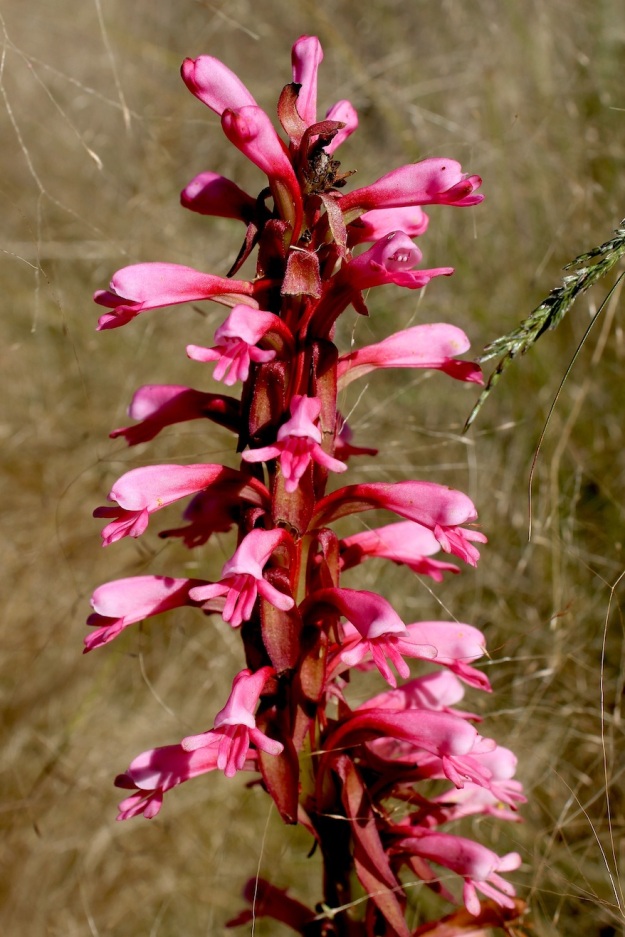Zulu names: unoklamu, unokleshe, uklamkleshe
According to Wildflowers of KwaZulu Natal, the underground tuber of this orchid is edible. Many of the Satyrium genus are used in traditional medicine – usually mixed with other plants and particularly for illnesses that are difficult to cure. 33 species occur in South Africa, some are used in infusions to ward off evil.
The name of this plant is very descriptive – satyrium from satyros (half man, half goat) referring to the two spurs which resemble horns, and macrophyllum – referring to the large light-green leaves at the base. With the dense inflorescence (up to 22cm) of deep pink flowers the plant can reach 80cm tall during summer. It occurs in moist grassland all over KZN and the Eastern Cape.
This plant was photographed on a CREW fieldtrip to Impendle Nature Reserve, if you are interested in Wildflowers and are keen to join the Midlands CREW call Nikki 083 473 3074 or email info@midlandsconservancies.org.za
